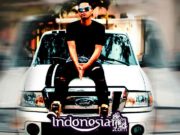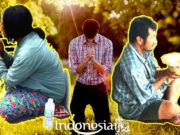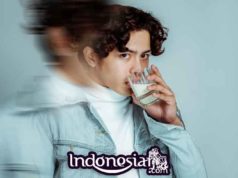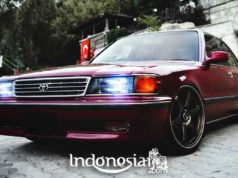Bangka is one of the two main islands that make up Bangka Belitung Province, the other island is Belitung. Bangka has a long history of mining exploration in the form of tin. In the 1st century Hindu literary books, Millndrapantha and Nidessa, Bangka Island has several names such as Vanka or Wangka, Monopin, Mayit-Dong, China Bato, and Banka. According to the Southeast Asian archaeologist from France, George Coedes in his scientific journal about the Srivijaya Kingdom which was published in 1918, Bangka Island or Wangka was known to Indian sailors before the 1st century.
Wangka in Sanskrit means ‘tin’. Stories about tin in Bangka are also written in ancient records belonging to the Srivijaya Kingdom, including the Kota Kapur inscription which tells of tin mining in Bangka in the early 7th century. Since that time, Bangka tin products have been recognized for their excellent quality. At that time, tin was used as a medium of royal bartering and material for inscriptions. Tin exploration is still being carried out on a small scale.
One of the largest tin production centers on Bangka Island is in Muntok City, a sub-district in West Bangka Regency. When viewed from the map, the city, covering an area of 469 square kilometers with a population of 45,523 people, is positioned right on the snout of Bangka Island, which looks like a sea horse.
Muntok was founded by the Sultan of Palembang Mahmud Badaruddin I in 1722. He was the fourth leader of the Palembang Darussalam Sultanate and made this seaside city a gift for his marriage to Mas Ayu Ratu Zamnah, a woman of Chinese descent from Johor-Siantan. Originally the city was called Mentok. However, the name changed to Muntok, due to the pronunciation that foreigners consider easier.
According to Tedjo Sujitno’s Timah History, the tin trade officially began in Muntok in 1730, between the Dutch East Indies Trade Guild or the VOC and the Palembang Sultanate. At that time, the VOC asked the Sultan of Palembang that the tin produced by Muntok be traded only to their side.
Since then, tin exploration on a large scale began and made the Sultanate of Palembang the richest kingdom in the Malacca Peninsula and Sumatra. The management rights for tin in Muntok were transferred to the British Colonial in 1811. Or exactly 3 years before going through the Treaty of London I, Britain returned to hand it over to the Dutch.
In 1819, the Dutch Colonial formed a tin management company, Banka Tin Winning Bedrijf (BTW), the forerunner of today’s PT Timah Tbk. The BTW-produced tin trademark is called Banka. This Dutch colonial-owned company carried out mass production of tin to be sold worldwide.
Nearly a century later, in 1912 to be precise, BTW began to build their head office which was located in a new area designed by the Dutch Colonial as the center of its government in Bangka. The BTW head office building consists of two building units, namely the three-floor main building covering an area of 500 square meters as an administrative office, a tin storage warehouse, and a tin smelting place.
The architecture of the BTW head office building which was functioned in 1915 adopted the Art Deco style that was developing in Europe at that time. As the end of the Dutch colonial period on August 17, 1945, this building was used as the head office of PT Timah Tbk when it was still named PN Tambang Timah Bangka.
However, in 2012 conservation efforts began to be made by PT Timah Tbk after being designated as a national cultural heritage by the Ministry of Education and Culture. A year later, on November 7, 2013, this historic white building opened to the public as the Muntok Indonesian Tin Museum (MTI). The Tin Museum has 176 collections in the form of tin mining tools over a century old, tin blocks, tin printing tools, miniature tin sand dredgers, as well as a replica of the Kota Kapur inscription.
The first tin museum in Asia provides nine galleries on the first floor of the museum. The first and second galleries are a cross section of Muntok’s history and socio-culture. In these two galleries, visitors can get information about Muntok City, starting from the era of the kingdom, when it was controlled by the Dutch to become part of Indonesia. In addition, there is also a replica of the weaving machine to make Muntok’s signature cloth.
Information in the gallery is conveyed in the form of posters on walls and table drawers. “We provide 70 percent of the tin issue and 30 percent of cultural and social issues outside of tin and the Second World War,” said the Head of the Indonesian Tin Museum Muntok Fahrizal Abubakar.
Other galleries are the Geology and Exploration room as well as the Land and Sea Mining Gallery. In this special room a map of tin mining in the world and Indonesia is displayed, a tool for measuring tin content, an area mapping tool, types of raw tin, and a tool for exploiting tin.
There is still more Tin Smelting Gallery regarding the history of metal smelting from time to time. The gallery also mentions the world’s first tin smelting that took place in Turkey in 1,500 BC, when someone mixed copper and tin into bronze. This room describes in detail and clearly the smelting process of PT Timah Tbk’s tin ore and several samples of processed tin ready for sale.
Meanwhile, Galeri Sarana Prasarana displays old photos of Muntok City, including a map of Muntok Old Town. There is Bung Karno Gallery displaying photos of when the First President of the Republic of Indonesia and his friends were exiled to Muntok. This includes miniatures of Wisma Ranggam and Wisma Menumbing, the building where the figures were exiled in Muntok, about 10 minutes’ drive from the museum.
Fahrizal said that visitors to the Muntok Indonesian Tin Museum come from various regions in Indonesia. Most visits usually occur on weekends. The museum itself is open every Saturday to Thursday from 08.00 AM- 12.00 PM and 01.00 PM – 04.00 PM. Visitors are free of charge when entering the museum. This place is a historical and educational tourist destination that is worth a visit.
Come on, get other interesting information from Indonesiar.com and stay healthy during this COVID-19 pandemic.































